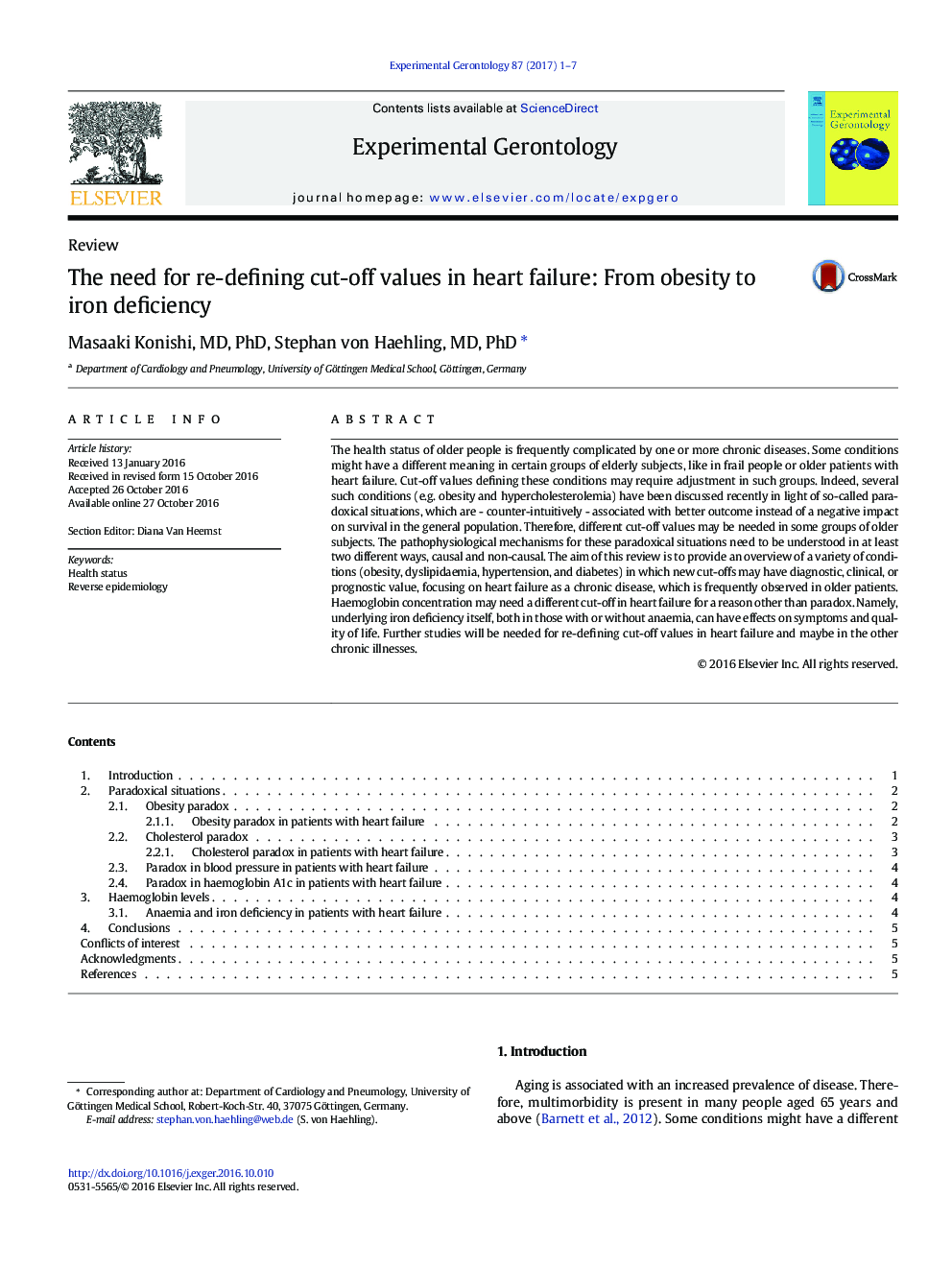| Article ID | Journal | Published Year | Pages | File Type |
|---|---|---|---|---|
| 5501480 | Experimental Gerontology | 2017 | 7 Pages |
Abstract
The health status of older people is frequently complicated by one or more chronic diseases. Some conditions might have a different meaning in certain groups of elderly subjects, like in frail people or older patients with heart failure. Cut-off values defining these conditions may require adjustment in such groups. Indeed, several such conditions (e.g. obesity and hypercholesterolemia) have been discussed recently in light of so-called paradoxical situations, which are - counter-intuitively - associated with better outcome instead of a negative impact on survival in the general population. Therefore, different cut-off values may be needed in some groups of older subjects. The pathophysiological mechanisms for these paradoxical situations need to be understood in at least two different ways, causal and non-causal. The aim of this review is to provide an overview of a variety of conditions (obesity, dyslipidaemia, hypertension, and diabetes) in which new cut-offs may have diagnostic, clinical, or prognostic value, focusing on heart failure as a chronic disease, which is frequently observed in older patients. Haemoglobin concentration may need a different cut-off in heart failure for a reason other than paradox. Namely, underlying iron deficiency itself, both in those with or without anaemia, can have effects on symptoms and quality of life. Further studies will be needed for re-defining cut-off values in heart failure and maybe in the other chronic illnesses.
Keywords
Related Topics
Life Sciences
Biochemistry, Genetics and Molecular Biology
Ageing
Authors
Masaaki MD, PhD, Stephan MD, PhD,
